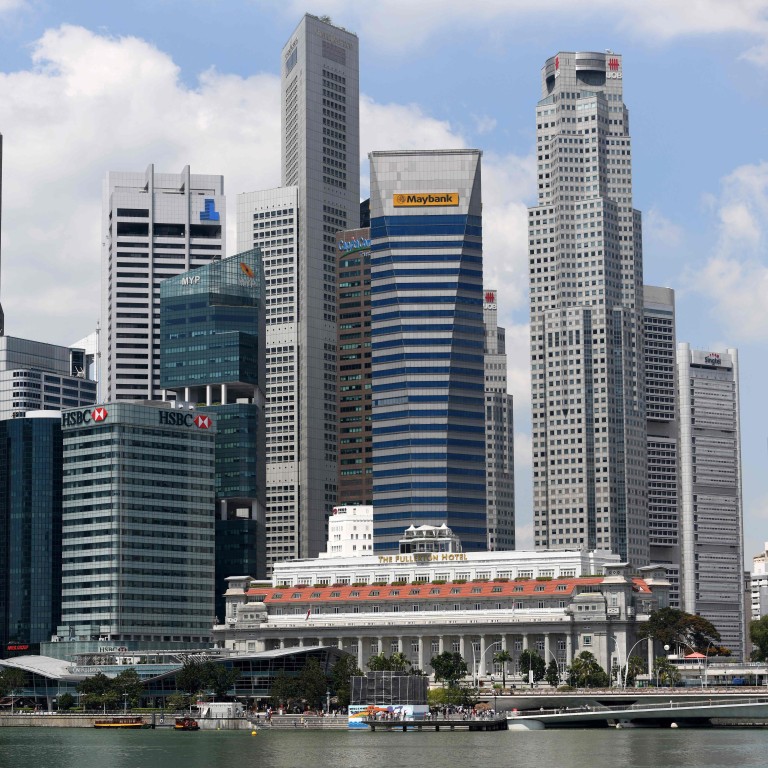
Singapore wants to liven up CBD with more hotels and residential property, according to urban plan
- Regeneration could be a boon for some developers, especially those with low debt
- Conversion of offices into hotels or serviced apartments could also help alleviate shortage in hospitality sector
Living where you work and play may not seem like the ideal balance in terms of escaping the grind, but it is a key plank of Singapore’s vision for its central business district.
Like many cities’ financial centres, Singapore’s is bustling by day and close to deserted on a weekend. The government hopes to change that and laid out details of how it aims to go about it in an urban draft plan released last month.
Chief among the proposals is increasing the number of residential developments and hotels by encouraging firms to convert existing office space. One suggestion involves boosting buildings’ so-called plot ratios – the higher the plot ratio, the more subdivisions of floor space that are allowed.
These incentives will specifically target older-style buildings in central areas such as Anson Road, Cecil Street, Shenton Way and Tanjong Pagar.
That could prove a boon for some developers, especially those with low debt. They will be in a prime position to participate in any auctions for land in the central business district, according to Jonathan Koh, an analyst at UOB Kay Hian. His top picks are CapitaLand and City Developments, whose building known as The Arcade is particularly old and in need of restoration.
In global property investments, Singapore and others are stepping in where China left off
“Urban regeneration is a journey that Singapore needs to take to emulate the success of cosmopolitan hubs like Manhattan, London and Shanghai,” said Moray Armstrong, managing director of CBRE Group in Singapore. “We’re excited that some of the older buildings are now part of the plans to revitalise the central business district.” It could unlock a lot of value by allowing developers to breathe new life into their obsolete office stock, he said.
The conversion of office space into hotel rooms or serviced apartments could also help alleviate the shortage in the hospitality sector, with the current pipeline of hotel rooms not expected to meet a predicted increase in tourists.
The draft master plan, under the remit of Singapore’s minister for national development, Lawrence Wong, also includes a proposal to move more facilities like storage and utilities underground to free up space for living. An increase in the number of green spaces like parks and park connectors is on the agenda too. It is hoped that in future, more than 90 per cent of households will be within walking distance of a park. Public feedback can be submitted by April 25.
Singapore the world’s hottest luxury property market, while Vancouver ranks worst, says Knight Frank global index
It is not as if there is not any apartment living in Singapore’s central business district currently. When the Marina Bay financial district – often referred to as the city’s second downtown – was built around seven years ago, with it came luxury apartments including The Sail and Marina Bay Suites. Other central unit blocks such as One Shenton Way and V on Shenton have bars, restaurants and retail stores clustered around their base.
But Cushman & Wakefield’s head of research for Singapore, Christine Li, writing an opinion column in a local newspaper, noted that “families shun this neighbourhood, due to the lack of amenities, childcare and school options for young children. The target pool of residents remains mostly expatriates, singles and dual income no-kids couples”.
The advent of more homes in the city could also benefit office landlords such as CapitaLand Commercial Trust and Keppel Reit, as the redevelopment of older office buildings into hotels or apartments reduces the supply of available space. CCT could look to redevelop the HSBC Building at 21 Collyer Quay while Keppel Reit could redevelop Bugis Junction Towers, UOB Kay Hian’s Koh said.
Prime office rents in Singapore are already the highest in a decade, preliminary estimates from Jones Lang LaSalle showed last month. The average monthly rent of Grade A central business district office space rose 3.7 per cent to S$10.63 (US$7.85) per square foot in the quarter ending on March 31, versus the previous three months.
“In land-scarce Singapore, we cannot afford to have entire precincts dedicated to a single usage defined by official working hours,” CBRE’s Armstrong said. “Specific initiatives are needed to inject more vibrancy and draw crowds beyond working hours.”

